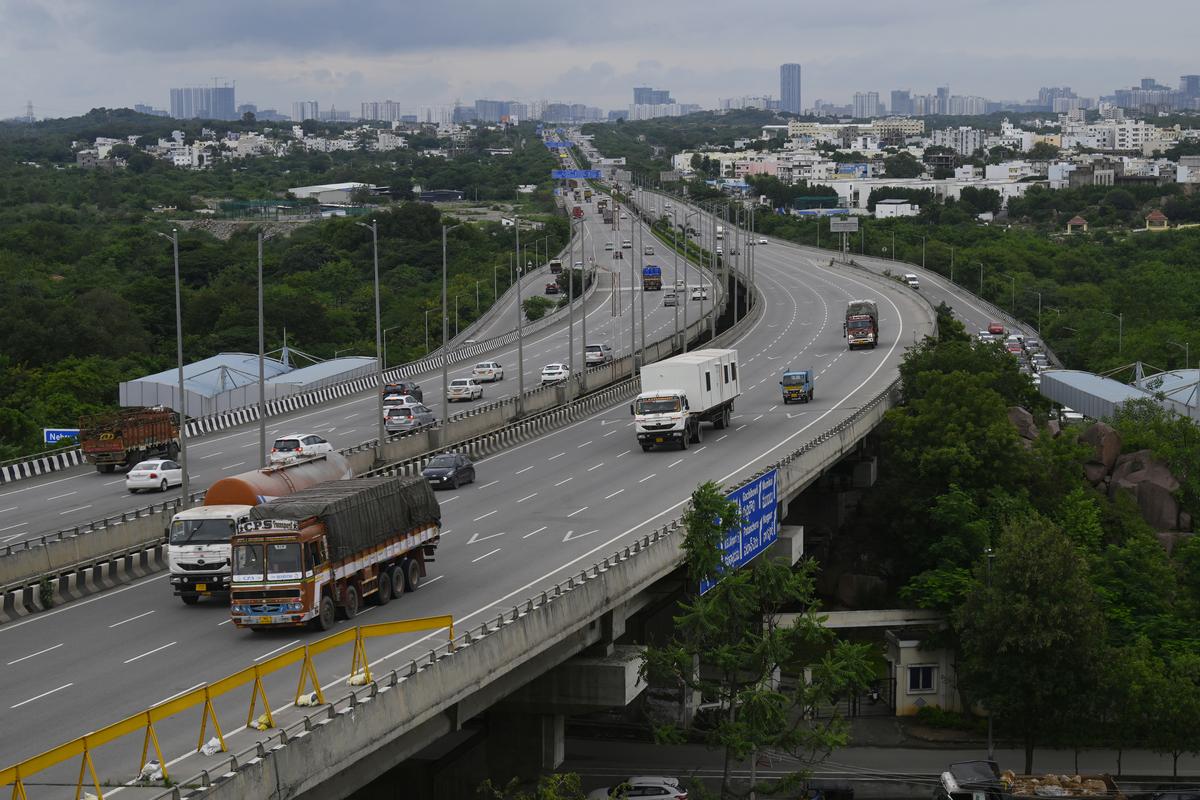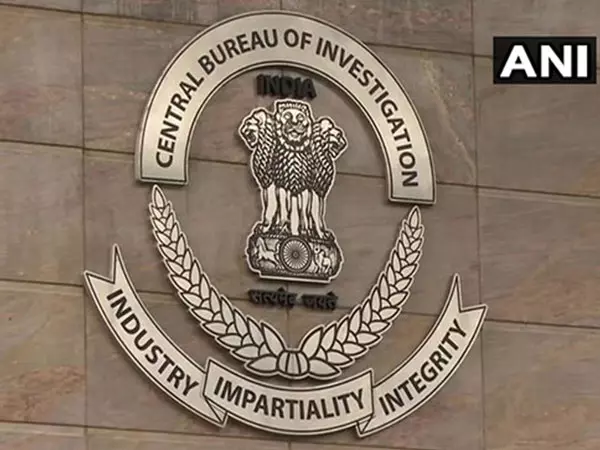The passport had come in the morning. The trip was booked. The dream was days away.
On the night of May 9, Deepesh Agarwal (23) slipped out for a drive with his friends Sanchay Malpani, 22, and Priyanshu Mittal, 23, in his gleaming new Tata coupe, a birthday gift from his parents just five months earlier. They had only just begun paying the EMIs. By dawn, the car and the three young men were reduced to ashes in what is now being called one of the most gruesome crashes this year.
The trip to Turkey, planned for May 10–20, was to be Deepesh’s last hurrah before settling down and focusing on his career. “Just let me go on this one trip, and after that, I will do whatever you want,” he had promised his mother, Indu. But fate had other plans.

An inconsolable Indu recalls how Deepesh, the eldest son in the joint family, had always been ambitious and enterprising. “I never stop him but that night, I just felt something. I told him not to go. He said he was just meeting friends nearby,” she says, sobbing.
Around 11 p.m. that Friday, the trio had set off on a late-night drive on the Outer Ring Road (ORR), from Shamshabad to Ghatkesar. Almost three hours later, their car rammed into a goods carrier parked negligently, without hazard lights, near Gandi Cheruvu bridge. The collision sparked a fire, likely to have started from the car, and engulfed both vehicles. Police later said the goods vehicle driver, Erukala Krishna, had stopped to help another trucker whose fruit crates had spilt on the road. But his failure to alert oncoming traffic proved fatal, said an officer from Abdullapurmet police.
Also read: Five killed in accident in ORR near Bonguluru exit
Sanchay had already packed his bags. His flight to the U.S. was just weeks away. After years of hard work, the 22-year-old was finally headed abroad to pursue MBA— a dream he had chased with quiet determination. But that night, everything changed.
His uncle Ram, who was in Spain when the call came, still remembers the moment his world crumbled. “The ground beneath my feet shifted. Sanchay wasn’t just the youngest earning member in the family, he was the brightest. He had already stepped in to manage our family’s tyre business, something we have built over generations. He had so many plans. It’s all gone now,” he says.
Grief now lingers at the Malpani residence in Hyderabad, a sleek four-storey home once alive with chatter. Malpani’s elder brother Pranav, sitting quietly near the entrance, shares, “He said he was stepping out to grab a bite with his friends. It was late, but that wasn’t unusual. He and Deepesh were very close.”
Deepesh and Sanchay are among the 31 people killed on the Outer Ring Road (ORR) in the first four months of 2025 alone. The high-speed expressway, designed to make commuting faster and safer, has instead become a death corridor.

The greenbelt along the Outer Ring Road and the adjoining Narsingi on the outskirts of Hyderabad on July 24, 2025.
| Photo Credit:
Nagara Gopal
Around mid-July, five men were killed in a similar late-night crash near the Bonguluru exit, their car slamming into a slow-moving lorry. When police arrived, the vehicle was a mangled cage. The truck driver had fled.
Year after year, the numbers outpace the warnings. Data from the Cyberabad Commissionerate shows 36 fatal accidents on the ORR in 2021, resulting in 44 deaths. The toll rose in 2023 with 42 fatal crashes and 51 deaths, and remained high in 2024 with 42 accidents and 49 deaths. The first four months of this year have already seen 16 deaths.
Rachakonda’s numbers mirror the trend: 185 lives lost and over 540 injured on the ORR in five years. Despite brief dips in fatalities, the road has remained perilous with 2023 emerging as the deadliest yet with 51 deaths. In 2024, the death toll remained at 49, but injuries surged to 158, the highest in the five-year span. And 2025 is already off to a grim start with at least 15 fatalities and 38 non-fatal crashes.
Yet, enforcement gaps, poor signage and reckless driving continue to be overlooked, until the next crash forces the headlines.
A pattern of peril
A deeper look at five years of ORR crash data reveals chilling patterns. Some are consistent across commissionerates while others are more region-specific but one trend is undeniable: the early morning hours, especially between 3 a.m. and 6 a.m., are the deadliest stretch of the day.
In Cyberabad, 46 accidents occurred during this window in 2021 alone. Though numbers dipped to 16 in 2022 and 15 in 2023, the risk persists, driven by fatigue, low visibility and reckless speeding on near-empty roads.
Rachakonda echoes the pattern. In 2024, five fatal crashes were recorded between 3 and 6 a.m. — the same number as during the 9 a.m. to noon slot, making them the deadliest periods.
Also read: 363 killed in 1,822 road accidents by mid-2025 in Rachakonda
Sundays and Thursdays also stand out as the most accident-prone days year after year. In 2021 and again in 2023, Thursdays topped the charts with 40 and 22 accidents, respectively. Sundays consistently followed close behind, likely due to late-night returns or weekend outings ending in tragedy.
Heavy vehicles are at the heart of many of these crashes. In Cyberabad alone, trucks were involved in 519 accidents over five years, leading to 119 deaths and 436 injuries. Rachakonda’s 2024 data show a similar story — trucks accounted for 26 of 53 recorded accidents. But it is car occupants who bore the brunt, and 39 of those crashes resulted in fatalities or injuries for those in smaller vehicles.
Two-wheelers, despite being officially banned on the ORR, remain a stubborn presence. Cyberabad logged 25 such cases from 2021 to 2025, nine of them fatal. The numbers vary — three in 2021, seven each in 2022 and 2024, and already four deaths in the first four months of this year.
In Rachakonda, pedestrians, road workers and even lorry drivers have been among the lesser-reported victims. In one instance, a lone two-wheeler rider was fatally hit by a truck.
Most of the accidents happen in the dead of night, says Cyberabad traffic inspector G. Guruvaiah, when enforcement is lax and riders tend to stray onto the expressway, deliberately or not.
The data makes one thing clear: stricter surveillance, better signage and physical deterrents at entry points are urgently needed, especially during the off-peak hours when danger hides in the dark.
Spanning 158 kilometers, the ORR has developed its own map of danger — specific kilometre markers where tragedy repeatedly strikes. Topping the list is the 144.5-kilometre stone, now infamous for seven deaths and eight injuries, making it the single deadliest point on the expressway.
Not far behind is the 14-kilometre marker, with five deaths and eight injuries reported over five years.
The 61-kilometre point is another high-risk zone, with two fatalities and seven injuries, followed closely by the 142-142.5 kilometre and 40.5-41 kilometre stretches, both of which have seen recurring accidents.
The 61-kilometre segment of the ORR within Rachakonda jurisdiction is especially complex. It spans two traffic zones: Traffic-I (Yadgaripally to Musi Bridge) and Traffic-II (Musi Bridge to Harshaguda). Though seven toll gates — Keesara, Ghatkesar, Taramatipet, Peddamberpet, Bongloor, Ravirala and Thukkuguda — dot this stretch, they have done little to rein in the death toll.
Officials admit that current interventions are insufficient. Poor lane discipline, inadequate monitoring of heavy vehicles and unchecked speeding continue to make these zones lethal.
ORR’s emergency network
To improve emergency response, 16 Trauma Care Centres (TCCs) and 10 Advanced Life Support (ALS) ambulances have been set up along key interchanges on the ORR. Launched in 2020 by Hyderabad Growth Corridor Limited and now managed by TOT concessionaires, the system is run by two major healthcare providers — Apollo Hospitals and Yashoda Healthcare.
APOLLO HOSPITALS MANAGES FIVE TCCS with Ambulances at Pedda Amberpet, Bonguluru, Tukkuguda, Shamshabad and TSPA, and Oversees Additional Center at Taramathipet, Raviryal, Raviryal, and Pedda Golkonda Ambulances. Yashoda Handles A Similar Mix: Five Ambulance-Equipped TCCS at Kokapet, Patancheru, Dundigal, Shamirpet and Ghatkesar, With Center at Kollur, Sultanpur and Medchal Operating to Ambulats.

Each centre, located within toll booths, has two beds, life-saving equipment and telemedicine support for real-time consultations. ALS ambulances, staffed by trained paramedics, cover 8-kilometre stretches and meet national care standards.
Emergency care is free. Since launch, over 5,300 accident victims have been treated — 1,200 stabilised on-site and 2,000 given first-aid before being transferred to hospitals like Osmania, Gandhi, Apollo DRDO and Yashoda.
Fast roads, slow reforms
“The problem isn’t just the driver, it is flawed road design,” says Madhav Pai, CEO of WRI India, which works with local and national governments, businesses, and civil society to address India’s development challenges. Built for speeds of 120-160 kmph but with much lower posted limits, the mismatch creates risk even for law-abiding drivers, he points out, adding: “Safety must be built into the road, not added later,” he adds, calling for regular safety audits, better signage, speed-calming measures like rumble strips and alignment of design and legal speeds, especially as developments such as new land use, banquet halls, hotels and service roads change traffic patterns.
His WRI colleague Srinivas Alavalli advocates for continuous monitoring using cameras, speed detectors and signage that warns drivers of accident-prone zones and shares real-time accident statistics. “People need to see the cost; every death should be part of the public conversation.”
On the other hand, road safety author and driver-training coach Naresh Raghavan believes driver behaviour is the primary cause of the accidents. “Driver behaviour has not evolved with better roads and faster vehicles. People drive powerful cars with minimal training and licences are issued without teaching the basics.”
Speeding causes over 70% of ORR crashes, he says, pointing to reckless overtaking, poor lane discipline and slow drivers clogging fast lanes as major triggers. Even with signage, entry/exit ramps confuse undertrained drivers.
“In other countries, driving tests train you to make decisions at high speeds, for instance, taking the next exit safely if you miss one. That level of training is missing here.”
Drunk driving remains another threat. Cyberabad police issued 173 challans by April 2025 alone, 119 of those at one spot — Rotary Circle-II. These numbers stood at 423 challans in 2023 and 371 in 2024. “Alcohol dulls judgment and motor skills. The idea of hitting high speeds at night after a long day, and possibly a few drinks, is a recipe for disaster,” Raghavan says.
He criticises the push for “seamless driving,” which often means fewer patrols. “Abroad, patrol vehicles follow suspicious drivers and conduct mobile sobriety checks. We don’t have enough patrol vans on ORR, or even in other major Indian cities.”
Raghavan says most ORR crashes aren’t caused by one mistake; it is a chain of poor decisions, many of them entirely preventable. He also underlines the deadly misuse of the road shoulder. “That solid white line on the left marks a shoulder; it is not a driving lane. It is for emergencies only. Parking there requires hazard lights and warning cones placed 50 to 70 metres behind. But when people overtake via the shoulder, it often leads to underrun crashes, where survival is almost impossible.”






